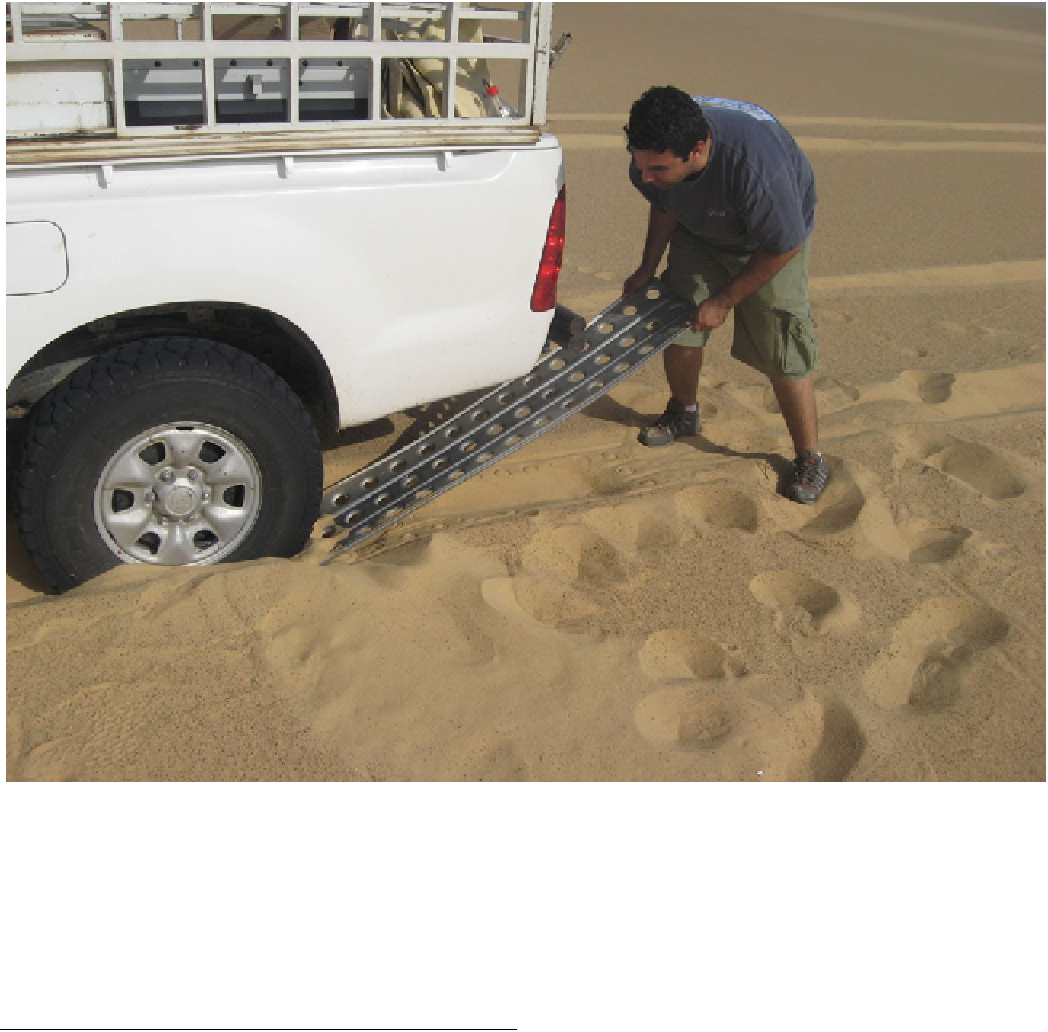Geoscience Reference
In-Depth Information
Fig. 22.10
JPL scientist Essam Heggy, during a ground-penetrating radar measurement campaign in Egypt, shoving a perforated sand channel
under the tire of a vehicle stuck in sand in preparation for backing out after getting stuck in soft sand moving uphill—sometimes it is easier to go
back than forward. Photo Ralph Lorenz
lethal if the rope snaps. Also towropes that are not applied to
appropriate hardpoints on the vehicle can cause damage—
one author knows of at least one axle that was bent this way.
For the present phase of unmanned exploration, there are
few options indeed. Apart from possibly using a manipu-
lator/sampling arm to push on the surface, controllers can
only adjust the position and torque/speed of the wheels. The
situation is analogous to a driver being imprisoned in
the vehicle on Earth, they have only the steering wheel and
the accelerator, and a very limited view of the wheels and
the ground. There is no prospect of being dug out (short of a
major wind episode) and certainly no hope of being towed.
The first rover on Mars, the tiny Sojourner rover, traversed
only a few tens of meters around the Pathfinder lander,
although it did encounter a couple of ripples (see Fig.
16.21
).
The 2003 Mars Exploration rovers Spirit and Opportunity,
having operated for many years and traversed many
kilometers, encountered a much wider range of terrain,
22.5
Getting Stuck and Unstuck on Mars
or Titan
While the potential for disaster does indeed exist, getting
stuck in the field is usually just an inconvenient part of the
terrestrial fieldwork process, and occasionally the source of
some good campfire stories. On other planets, however,
there are generally fewer options: one day, when astronauts
are driving on Mars, the amount of oxygen in their suits will
be an important consideration in digging out.

Search WWH ::

Custom Search